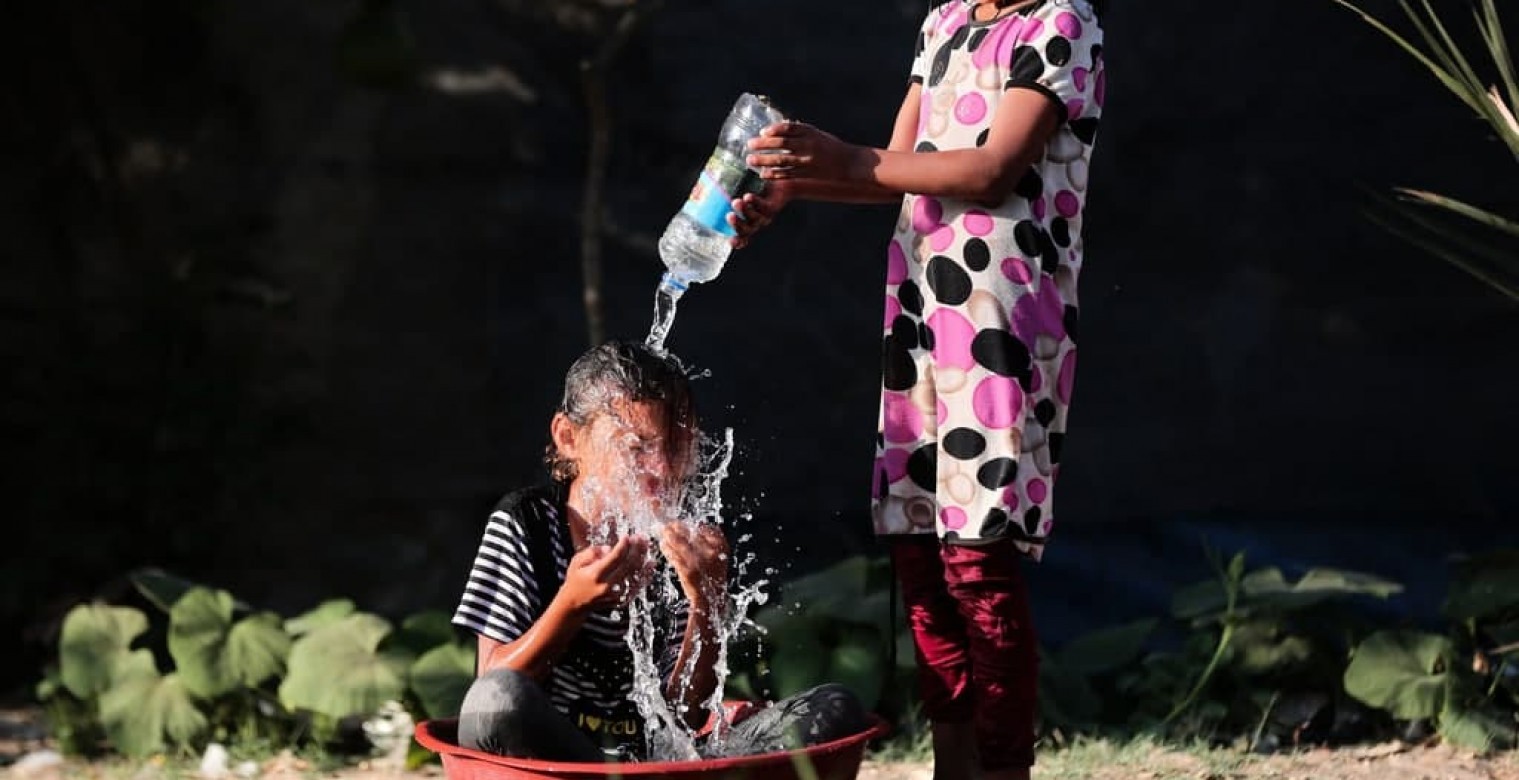A Street in Al-Shati refugee camp, west of Gaza city, the population density within this concrete block is about to explode over an area of 0.52 square kilometers. Shati is third largest of the Gaza Strip’s eight refugee camps and one of the most crowded. It is home to more than 85,000 refugees, who all reside in an area of just 0.52 square kilometers.
The actual story is even more beyond the refugee camp, as it is a truly existing example of the population density in Gaza strip. This population density is mainly due to the considerably risen of birth rates in Gaza where more than half of its population is in need of humanitarian assistance.
Regarding the latest statistic issued by the ministry of interior about fertility rate in Gaza, that 15,269 new births were recorded during the third quarter of this year, compared to 1,438 deaths.
Moreover, Statistic showed that there are around 7879 male births with 51,7% compared to 48,3% female births for 7390. Among the five Gaza governorates, the highest fertility rate was concentrated in the Gaza governorate.
Analyzing the above figures, we find that about 169 births are born in one day, which is equivalent to seven births every hour, a number that warns of a near population explosion in light of the limited geographical area in addition to the political obstacles and economic crisis.
Citizens don't pay attention to this danger around, as Abu Muhammad Abd Rabbo (50 years old), a resident of the northern Gaza Strip, says that he does not have to stop having children because of the limited space of his house, where 14 people live. He added: “it's about family bond.”
Abed Rabbo is one of hundreds, even ps thousands, of heads of households who do not believe in birth control. "Doing birth controls, means that we give Israeli occupation the chance to conquer our demographic," he says, leaning his head on the wall of his dilapidated house.
The man confuses between seriousness and joking: "Sometimes I have difficulty distinguishing their names (his fourteen sons), but that's okay, in the future they will take care of me and their mother.
Due to the aforementioned which aligned with what Raed Salha stated, professor of human geography at the Islamic University that the two main reasons about the increase in birth rates in Gaza are: firstly, for a long time the Gaza Strip has been connected with the demographic conflict. It is a way for Palestinians to face the demographic growth of the occupation, in light of Israeli practices towards Palestinians to continuous expansion of settlements.
Secondly, as Salha mentioned, it is totally a social reason restricted to an idea of family bond. He pointed out that there are families that have a high birth rate, reaching 13 person, he stressed that the general average is 5 children per woman.
The hardest question to be understood and recognize is how the strip could accommodate that number of people?. According to Palestinian Central Bureau of Statistics "More than one-third of the population of the State of Palestine are living in Gaza with an estimated population of 5.2 million; 3.1 million in the West Bank compare to 2.1 million in the Gaza Strip. The percentage of refugees reached about 42% of the overall Palestinian population residing in the State of Palestine in 2017, with 26% being in the West Bank and 66% in Gaza Strip..
In order to circumvent this reality, residents are forced to build random additional floors to accommodate their families, which has reduced the entertainment and social facilities, in addition to the fact that hundreds of families live in substandard and inappropriate conditions.
Returning to Al-Shati camp, for example, school buildings of which three are single-shift and 22 operate on double shifts, accommodating 25 schools in total and 22 on a double-shift basis, one food distribution center that is in urgent needs for rehabilitation. Besides, one health centre, according to the United Nations Relief and Works Agency for Palestine Refugees (UNRWA). This is a reflection of the growing needs in all forms of facilities, whether health, recreational, or even housing.
Even the issue of vertical expansion in building is not a sufficient solution, the Ministry of Public Works and Housing explains that shorting of housing units reaches to 120 thousand unit.
Naji Sarhan, Assistant Undersecretary of the Ministry of Public Works and Housing in Gaza indicates that the strip requires 14,000 housing units annually, explaining that tens of thousands of poor and low-income families are suffering due to the lack of adequate shelter as a result of bad economic conditions.
Certainly, the recent Israeli aggression in the Gaza Strip last May has deteriorated these needs, which caused a complete destruction of 1,500 housing units, in addition to 880 units that were partially destroyed and uninhabitable, 56,000 were between partial and compete destruction according to Sarhan's recent statements.
He stressed that the Gaza strip need to 3 billion dollars for its reconstruction, and said: "The Strip needs one billion dollars to rebuild the damage that left by the latest aggression on last May, as a result of wars, two billion dollars also to revive Gaza again and bring it back to life."
Meanwhile, a source from the Ministry of Public Works and Housing confirmed to the Institute for Palestinian Studies that the ministry took into consideration during the process of repair and rehabilitation, the need to work on including and rehabilitating infrastructure, in addition to improve living conditions, include provide housing units to accommodate the existing population density in sector within the reconstruction plan.
the source said: "It is unreasonable to excluded poor's from the reconstruction of the dilapidated homes, as well as providing new house units to contain the annual increasing number of residents but we realize that this is not a sufficient solution in the long run... Gaza needs logical and thoughtful planning that prevents an imminent population explosion.



